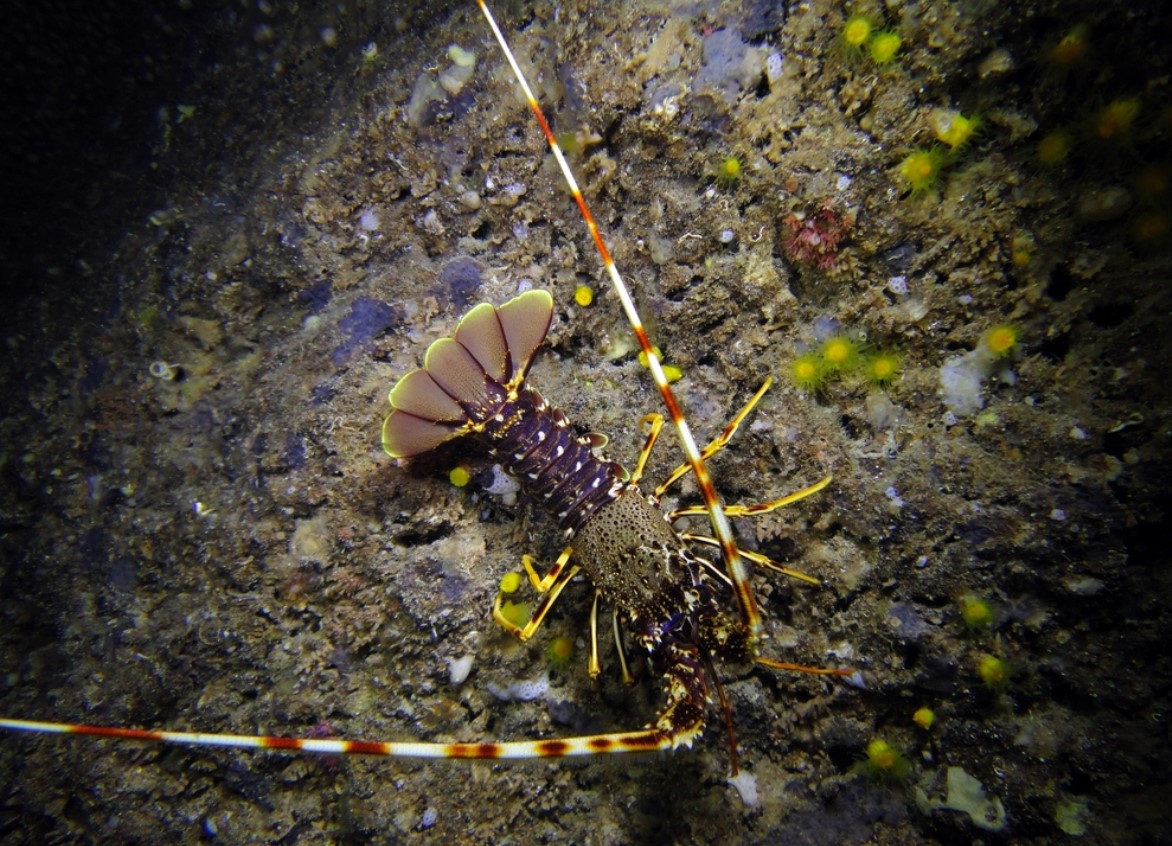Noticia

Crustáceos decápodos
Un grupo amplio y diverso
30/11/2021
Son muchas las especies que podemos encontrar en la costa. Una de las más graciosas son los cangrejos: rápidos crustáceos que saben jugar muy bien al escondite entre las rocas o la arena. También están las langostas con largas antenas que actúan como sensores. Los cangrejos ermitaños son buenos ilusionistas porque dentro de su caparazón y quietos, parece que la concha está vacía. Las gambas, animadas bailarinas en el agua. Estas y otras muchas especies forman parte de lo que llamamos ‘crustáceos decápodos’ y todo el mundo puede contribuir a su estudio a través de Observadores del Mar.
Siendo un grupo de especies muy ligado a la gastronomía, se podría esperar que su ciclo de vida y todas sus características fueran muy conocidas, en cambio, hay especies como la langosta —la especie más emblemática—, de la cual aún desconocemos algunos aspectos, por ejemplo: su fase juvenil. Si bien en el tiempo de Aristóteles ya se conocía a la langosta adulta, no fue hasta 1995 que se descubrió la langosta juvenil. Probablemente se buscaba mal, ya que la langosta juvenil no se encuentra a tanta profundidad como la langosta adulta y la podemos ver a 15-20 metros de profundidad. Sin embargo, no es fácil de ver; se esconde entre bloques de roca calcárea. Para encontrarla, hay que buscar entre mayo y septiembre (aunque se está desplazando el ciclo a junio) y, muy cerca del fondo de la roca, podemos intentar vislumbrar sus antenas y seguirlas hasta ver su pequeño cuerpo idéntico en forma al de la adulta. Hemos de mirar en rocas ‘limpias’, sin algas, ya que con sus antenas —que son como sensores— perciben su alrededor y las algas les impiden esa labor.
Al igual que la langosta, hay otras especies con valor gastronómico. Una de ellas es el cangrejo azul Callinectes sapidus, una especie procedente del Atlántico y gran invasora en el Mediterráneo. El cangrejo azul es un depredador que come absolutamente de todo; es omnívoro, carroñero y hasta puede alimentarse de sus congéneres. Es tal su voracidad que en el Delta del Ebro ha acabado con todos los crustáceos y moluscos de la zona. Otro cangrejo invasor es el cangrejo araña Percnon gibbesi, un crustáceo plano de color marrón que llegó al mar Balear a finales del siglo XX —las primeras citas fueron en la zona norte de Mallorca, en la Albufera, y en Menorca. Es una especie herbívora, se alimenta fundamentalmente de algas. La podemos encontrar en rocas planas y se esconde muy rápidamente. Aún falta saber su impacto ecosistémico; de momento se sabe que allá donde se encuentra esta especie, disminuye la cantidad de algas.
Hablando de especies no autóctonas, podríamos hablar de algunas curiosidades a nivel global. Por ejemplo, en Japón encontramos la especie más grande del mundo, llamada Macrocheira kaempfer. Se trata de un cangrejo gigante, de varios metros de tamaño teniendo en cuenta sus patas. Otras especies, en cambio, pueden ser muy pequeñas y las podemos encontrar buscando entre las algas, eso sí, no se ven a simple vista. Si queremos buscar a los nano cangrejos por las costas de Mallorca, podemos verlos en la Cystoseira —un alga dura con forma de abeto pequeño y de color marrón-granate.
Como decíamos al principio, son muchas las especies que podemos encontrar en la costa y mantener la biodiversidad es vital para la conservación marina. En este sentido, las áreas marinas protegidas han favorecido a aumentar la biodiversidad, como en el caso de la cigala —especie declarada por la FAO como sobreexplotada—, que ha reaparecido en la costa catalana gracias a la existencia de estas zonas de protección. En Observadores del Mar y Fundación Marilles, y junto a otras organizaciones, abogamos por potenciar estas zonas y dotarlas de más recursos para mejorar su gestión.
_
¿Quieres saber más? Escucha el episodio nº06 "Crustáceos Decápodos" de nuestro PODCAST (en Ivoox o Spotify), con David Díaz, investigador en el IEO y coordinador científico del proyecto Crustáceos Decápodos; Lluc García, naturalista y cofundador del Museo Balear de Ciencias Naturales; Iván Ramos, jefe del Servicio de Protección de Especies de la Conselleria de Medi ambient i Territori de Baleares; y con Sandra Espeja, coordinadora de Observadores del Mar en Baleares desde la Fundación Marilles.
Este artículo se publicó originalmente en inglés en Mallorca Daily Bulletin.
_
Foto: Palinurus elephas (langosta). Foto de Juan Antonio Torres Balaguer. Fuente: Observadores del Mar.
